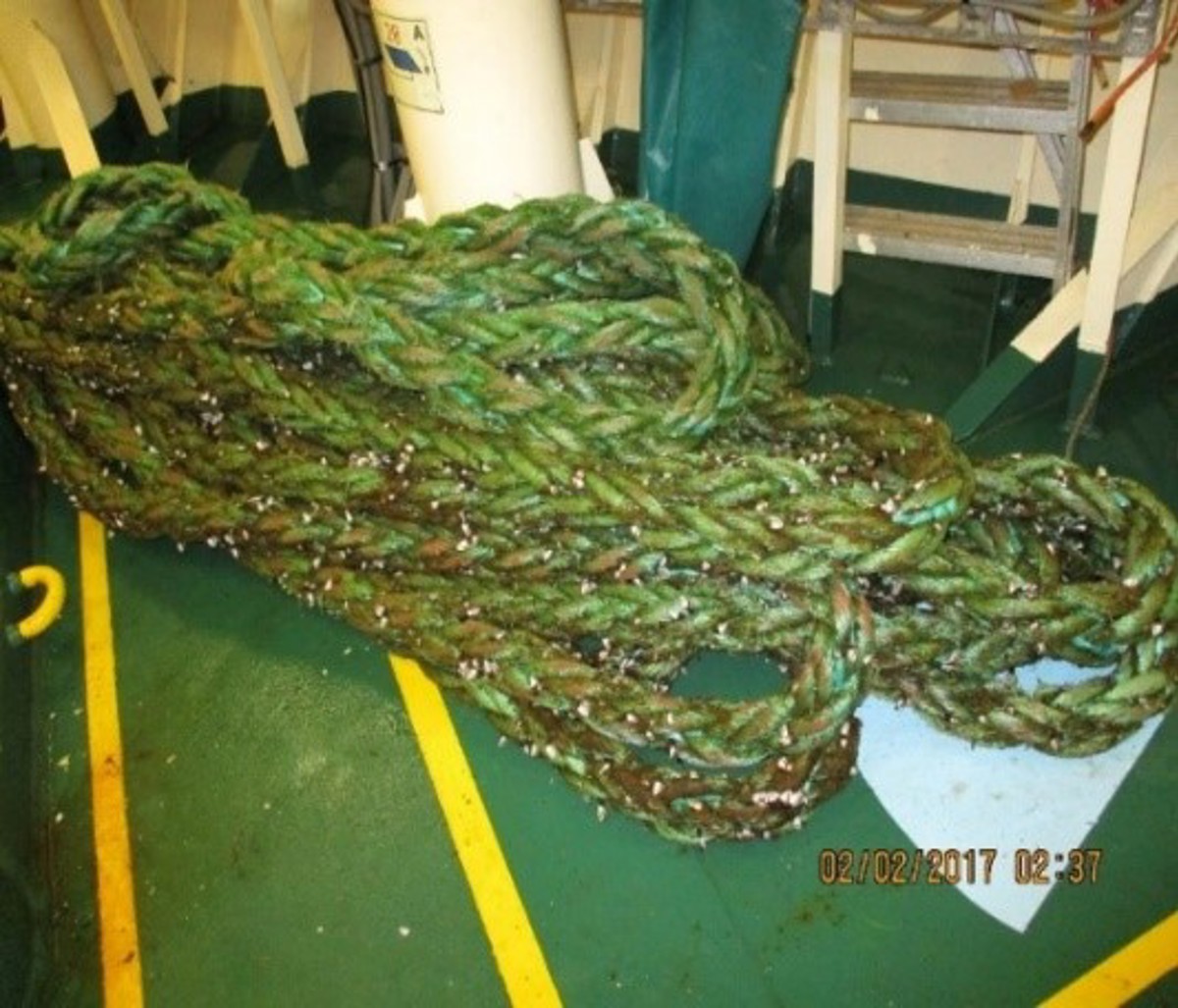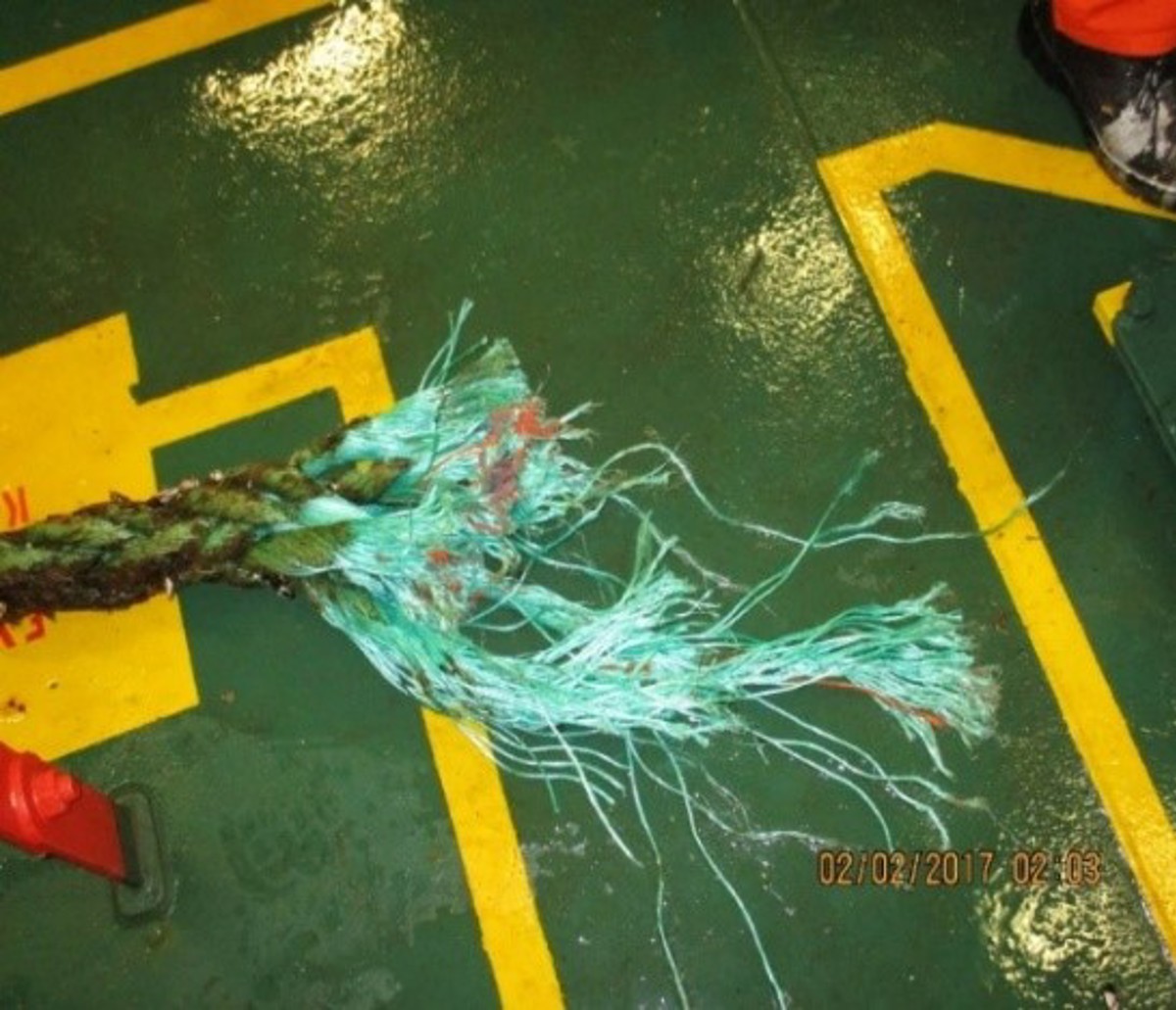High potential near-miss: Mooring rope parted
- Safety Flash
- Published on 15 June 2017
- Generated on 12 December 2025
- IMCA SF 15/17
- 2 minute read
Jump to:
Mooring buoy rope parted while a vessel was moored.
What happened?
The potential severity of the incident was categorised as “high” owing to the potential injuries that could have arisen had someone been in the snap back zone.
No injuries or damage to the vessel occurred apart from the parted mooring rope.
What was the cause?
Equipment failure following from wear & tear, in turn following from inadequate or insufficient routine inspection.
It was evident from inspection after the fact that the condition of the mooring rope was bad.


What lessons were learned? And what were the actions?
- Planned and regular inspection of mooring ropes.
- If mooring ropes are found in poor condition, they should be taken out of use.
- All crew associated with mooring operations should be properly informed and fully briefed with regard to:
-
- the mooring operation in general
- checking for defects with the ropes
- proper precautions relating to keeping out of the snap back zone.
- the mooring operation in general
Members may wish to review a list of mooring-related incidents – this can be done by visiting IMCA's Safety Flashes webpage and entering the appropriate search text (e.g. parted mooring) in the Search box.
Members should be aware of existing IMCA documentation as follows:
- IMCA HSS029, M214 – Mooring practice safety guidance for offshore vessels when alongside in ports and harbours
- Mooring incidents (video).
Related safety flashes
-
IMCA SF 11/15
10 August 2015
-
IMCA SF 12/14
14 July 2014
IMCA Safety Flashes summarise key safety matters and incidents, allowing lessons to be more easily learnt for the benefit of the entire offshore industry.
The effectiveness of the IMCA Safety Flash system depends on the industry sharing information and so avoiding repeat incidents. Incidents are classified according to IOGP's Life Saving Rules.
All information is anonymised or sanitised, as appropriate, and warnings for graphic content included where possible.
IMCA makes every effort to ensure both the accuracy and reliability of the information shared, but is not be liable for any guidance and/or recommendation and/or statement herein contained.
The information contained in this document does not fulfil or replace any individual's or Member's legal, regulatory or other duties or obligations in respect of their operations. Individuals and Members remain solely responsible for the safe, lawful and proper conduct of their operations.
Share your safety incidents with IMCA online. Sign-up to receive Safety Flashes straight to your email.